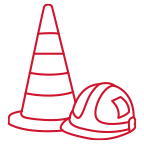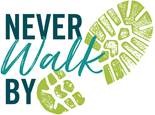Title Page
-
Site conducted
-
Conducted on
-
Prepared by
-
Location
-
Was an additional party involved?
-
List all other parties involved
-
List all other parties involved
-
List all other parties involved
-
List all other parties involved
-
List all other parties involved
Inspection Instructions
-
Compliance checks according to this inspection are to be completed on a instance-by-instance basis. For each instance of an element which is inspected, click the + icon in the top right corner of the inspection section to create a new set of fields. This should be done for each inspected instance.
-
Wherever possible try to ensure that a minimum of 5 instances are inspected per category.
-
Any observed non-compliances should include both an action item and a description of the issue using the integrated functions.
-
Where instances of non-conformance are observed which may pose an immediate threat to the well-being of workers or bystanders, pause the inspection and immediately stop work. Make a not of this in the inspection once the area has been made safe.
-
While making records for this inspection, ensure that you are in a safe position to do so.
Inspection Questions
- Confined Space
-
Space Name
-
Are all confined spaces clearly and conspicuously identified to prevent accidental/unauthorized access?
-
Do confined space permits accurately identify the actual hazards associated with the space?
-
Where a confined space is in use, are permits up to date and signed by all appropriate parties?
-
Is confined space ventilation accurate to what is specified on the permit?
-
Is an appropriately trained standby person performing duties in accordance with the conditions of the permit?
-
Are all welding lines, hoses, and other welding tools being removed from confined spaces while vacant?
Working at Heights
-
Trade Observed
-
Where work is taking place at over 6' in height is fall protection equipment in use?
-
Where work is taking place at over 25' in height has a fall protection plan been developed?
-
Are all fall protection elements tagged with current inspection markers?
-
Has fall protection equipment been inspected prior to use?
General Yard Safety
-
Worker Category
-
Are workers obeying yard safety rules?<br>(no talking and walking, staying within yellow walkways, wearing appropriate PPE)
-
Was the worker aware of emergency procedures?<br>(muster points, roles and responsibilities in an emergency, emergency contact numbers)
-
Was the worker aware of OHS policy?<br>(Where information is available, their responsibilities, hazard communication)
Personal Protective Equipment
-
Task description
-
Is the respiratory protection being used by workers appropriate for the task?
-
Is general PPE being used by workers appropriate for the task?
-
Where a task requires specific PPE is it being used?
-
Is PPE widely available to workers as needed for each task?
Lock Out Tag Out
-
Description of Identified Process
-
Has company LOTO procedure been applied to identified work process
-
Do locks on equipment clearly identify the lock owner and a method of contact?
-
Have all invested parties identified a process for lock removal, including a lockout coordinator?
-
Has a clear LOTO plan been identified for the equipment being worked on?<br>(De-energization points, re-energization procedure, permitted workers)
Vehicle Operation
-
Operator Category
-
Was the operator focused solely on driving?
-
Were speed limits being obeyed?
-
Was signage appropriately obeyed?
-
Were spotters being used as necessary to manage hazards?
-
Was the operator appropriately trained/licensed to operate the vehicle?
Mobile Equipment Operation
-
What type of mobile equipment was observed?
-
Has a pre-use inspection been completed for the identified equipment?
-
Do operators know the location of operational manuals and safe work procedures for the equipment?
-
Are all signaling devices in good operational condition?
-
Is the mobile equipment free of damage? (fluid leaks, restraints, damaged ROP, bent forks)
-
Is the mobile equipment being operated in a safe manner? (obeying speed limits, stopping at stop signs, signaling actions as needed)
-
Are loads on mobile equipment being handled in a safe manner?
-
Are operators appropriately trained and authorized to operate the mobile equipment?
Ladders and Work Platforms
-
Trade observed
-
Are ladders and work platforms on good firm ground and stable?
-
Are ladders tied off as needed?
-
Is the length of the ladder appropriate to allow access to the higher level?
-
Is the selected ladder/work platform appropriated for the task being undertaken?
-
Was the ladder inspected prior to use?
-
Is the ladder in good usable condition?
Hot Work
-
Trade observed
-
Have workers performed pre-use inspections on their equipment prior to working?
-
Are inspection tags for hoses and tools up-to-date?
-
Is equipment in good usable condition?<br>(Free of leaks, cracks, other visible damage)
-
Are hot work permits available and signed as needed?
-
Where gas welding/burning equipment is being used, are flashback arrestors in place?
-
Is the gas tag procedure being followed for all in use gas lines?
-
Are receptacles available for electrode stubs?
-
Are fire extinguishers readily available and easily accessible for all hot work operations?
Rigging and Hoisting
-
Trade Observed
-
Are all rigging components being inspected prior to use?
-
Are inspection tags up-to-date for slings and rigging equipment which is in use?
-
Is the rigging equipment which is in use appropriate for the task being completed?
-
Where a lift has been deemed critical by WSBC has a critical lift plan been developed and signed by all parties?
-
"Where a lift is taking place, are appropriate measures being taken to restrict access?<br>(control zones, rigger monitoring, spotters, ...)"
-
Where a lift is being done blind by the operator or has the potential to become blind, are spotters being used as appropriate?
-
Are all personnel involved in the lift appropriately trained for their respective roles?
-
Have pre-use inspections on cranes in use been completed?
Hazardous Material Handling/Practice
-
Identify the hazardous substance under review.
-
Are containers which are being used to store hazardous materials in good condition?
-
Are all hazardous material containers appropriately labeled? (manufacturer/workplace label)
-
Is a current and complete SDS package available for all hazardous materials?
-
Are storage conditions for hazardous materials appropriate? (not in a position to fall or tip, not exposed to extreme environments, stored in locked cupboards as needed, adequately ventilated, clearly identified, ...)
-
Are pressurized cylinders secured against tipping/falling using chains/straps?
Control Zones and Barricades
-
What work process is being observed?
-
Where tape is being used to establish a control zone, is the correct style (danger/caution) being used?
-
When hazard creating tasks have been completed, are control zones being removed?
-
Are workers aware of situations where they need to establish control zones?
-
Where hazardous work is taking place, are workers observed effectively using control zones?
-
Where control zones have been established, is a tag which appropriately describes the hazard and hazard owner attached?
Emergency Response and Preparedness
-
Area Observed
-
Are workers familiar with their responsibilities and procedures in the event of an emergency?<br>(Muster, evacuation routes, ...)
-
Are means of emergency egress/exit/escape being maintained free of debris/clutter/garbage/combustibles which may make escape in an emergency infeasible?
-
Where a situation has been identified as requiring formal rescue documentation, is the equipment and necessary personnel as outlined in the rescue plan readily available?
-
Where work is happening at any listed below, has a risk assessment been completed and documented for the task?<br>(a) work at high angles,<br>(b) work in confined spaces or where there is a risk of entrapment,<br>(c) work with hazardous substances,<br>(d) underground work,<br>(e) work on or over water, and<br>(f) workplaces where there are persons who require physical assistance to be moved
-
Where work is happening under any of the below listed conditions, has an appropriate plan for rescue been written and conspicuously published?<br>(a) work at high angles,<br>(b) work in confined spaces or where there is a risk of entrapment,<br>(c) work with hazardous substances,<br>(d) underground work,<br>(e) work on or over water, and<br>(f) workplaces where there are persons who require physical assistance to be moved












